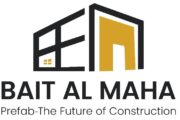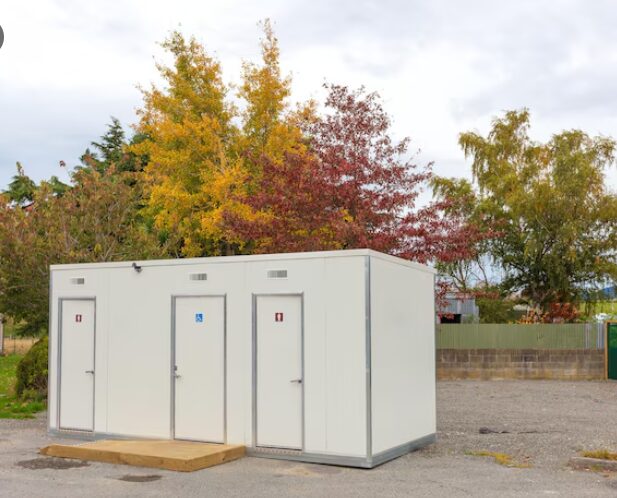Modular toilets have revolutionized sanitation in the United Arab Emirates (UAE), a nation defined by its rapid urban development, ambitious infrastructure projects, and unwavering commitment to sustainability. These innovative systems—encompassing portable units, prefabricated bathroom pods, luxury models, and smart toilet technologies—address the UAE’s unique challenges, including extreme desert climates, water scarcity, stringent hygiene standards, and cultural expectations for privacy and comfort. As the UAE constructs iconic skyscrapers, hosts global events, and pursues its Vision 2030 sustainability goals, modular toilets offer flexible, efficient, and environmentally conscious solutions for diverse applications, from sprawling construction sites to luxury festivals, high-rise buildings, and remote desert camps.
What Are Modular Toilets?
Modular toilets are pre-manufactured sanitation systems designed for rapid deployment, offering unmatched versatility, durability, and efficiency compared to traditional toilets. Built in controlled factory environments, these units ensure consistent quality, reduced installation time, and adaptability to various settings, from temporary event setups to permanent commercial installations. In the UAE, modular toilets are engineered to withstand extreme temperatures (up to 50°C), resist dust ingress, and meet stringent hygiene and water conservation standards, making them ideal for the region’s unique environmental and cultural demands.
Definition and Components
A modular toilet is a prefabricated unit comprising pre-assembled components such as toilet fixtures (e.g., ceramic bowls or waterless systems), water tanks (50-200 liters for portable units), waste storage tanks (700-1000 liters), ventilation systems (50-100 cubic feet per minute airflow), and structural panels (e.g., 12-13mm thick). Portable units are standalone, designed for mobility, with features like handwash stations (1-2 liter capacity), tissue dispensers, and antimicrobial coatings to ensure hygiene. Bathroom pods, used in permanent installations, integrate toilets, sinks, showers, lighting (500-1000 lumens), and finishes like tiles or marble, arriving ready for connection to building systems. These units use standardized fittings (e.g., 50mm plumbing pipes, 220-240V electrical systems) for quick installation, reducing on-site labor by up to 60% compared to traditional construction. In the UAE, components are designed with heat-resistant seals (rated for 60°C), UV-protected finishes, and dust-proof gaskets (IP65 rating) to ensure longevity and performance.
Types of Modular Toilets
Modular toilets are categorized by design and application, each tailored to specific UAE contexts:
- Portable Toilets: Lightweight (50-100 kg), mobile units for temporary use at construction sites, events, or remote locations. They feature large waste tanks, low-flow flush valves (0.5-1 liter per flush), and durable materials like High-Density Polyethylene (HDPE) to withstand sandstorms and heat. Some include twin-cabin designs for gender separation, critical in the UAE’s culturally sensitive settings.
- Bathroom Pods: Fully assembled bathroom units for commercial or residential projects, such as hotels or offices. Pods include integrated plumbing (50mm pipes), electrical wiring (220V), and finishes, reducing construction time by 50-60%. They are customizable with high-end fixtures or eco-friendly systems.
- Luxury Modular Toilets: Premium units with features like climate control (22-25°C), LED lighting, and touchless fixtures (infrared sensors with 0.1-second response). These are ideal for upscale events or facilities, offering spacious interiors (1.5-2 meters wide) and aesthetic finishes like ceramic or stainless steel.
- Smart Modular Toilets: Technologically advanced units with bidet functions (0.5-1.5 bar water pressure), heated seats (25-35°C), and automated cleaning systems (UV sterilization killing 99.9% of bacteria). They incorporate sensors for water and waste monitoring, optimizing resource use in water-scarce regions.
Comparison with Traditional Toilets
Traditional toilets require on-site construction, involving masonry, plumbing, and electrical work, which can take weeks and lead to quality inconsistencies due to variable labor or materials. Modular toilets, built in factories, ensure uniformity, with installation completed in hours (portable units) or days (bathroom pods). They offer flexibility—portable units can be relocated, and pods streamline large-scale projects. In the UAE, where project timelines are critical, modular toilets reduce delays by up to 60% and incorporate advanced features like water-saving systems (0.5-3 liters per flush vs. 6-8 liters for traditional toilets) and antimicrobial surfaces, addressing environmental and hygiene priorities more effectively.
History of Modular Toilets
The history of modular toilets reflects global advancements in sanitation, adapted to the UAE’s rapid development and environmental challenges. Globally, portable sanitation emerged in the early 20th century with basic latrines for military camps and disaster relief, constructed from wood or metal. The 1940s introduced lightweight plastics, enabling portable toilets for construction sites and public events. By the 1970s, chemical waste treatment (using biodegradable additives) and water-saving flush systems (3-6 liters per flush) improved hygiene and portability. The 1990s saw the rise of prefabricated bathroom pods, driven by urbanization and the need for efficient construction in densely populated areas.
In the UAE, modular toilets gained prominence in the 1980s during the construction boom that transformed Dubai and Abu Dhabi into global hubs. Early units were basic, made from metal or early plastics, designed for worker accommodations in desert construction sites. The harsh climate—temperatures up to 50°C, sandstorms, and humidity—necessitated durable materials like HDPE and Glass Reinforced Plastic (GRP), with tensile strengths of 20-100 MPa to resist corrosion and UV degradation. By the 2000s, the UAE’s focus on luxury and sustainability spurred demand for advanced designs, including bathroom pods for high-rise buildings and portable units with low-flow flush systems (0.5-1 liter per flush). The 2010s marked the adoption of smart toilets with bidet functions, sensors, and UV sterilization, aligning with the UAE’s futuristic vision. Recent innovations include waterless compost toilets and solar-powered systems, reflecting the UAE’s commitment to environmental stewardship and technological innovation.
Applications of Modular Toilets in the UAE
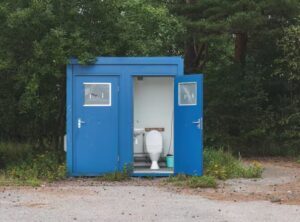
Modular toilets serve a wide range of applications in the UAE, addressing the diverse needs of its construction, event, commercial, and remote sectors while navigating environmental, cultural, and regulatory challenges.
Construction Sites
The UAE’s construction sector, driven by mega-projects like skyscrapers, bridges, and metro expansions, relies heavily on portable modular toilets for workers. These units, typically 1.2-1.5 meters wide and weighing 50-100 kg, feature large waste tanks (700-1000 liters), low-flow flush valves (0.5 liters per flush), and ventilation systems (50-100 CFM) to manage odors in confined spaces. Heat-resistant materials (rated for 60°C) and dust-proof seals (IP65) ensure durability in desert conditions, while features like handwash stations (1-2 liter capacity), tissue dispensers, and antimicrobial coatings meet UAE health regulations for worker welfare. Units can be configured in clusters to serve thousands of workers, with waste management systems (e.g., vacuum pumps) ensuring hygiene in unfinished sites.
Events and Festivals
The UAE’s vibrant event industry, hosting cultural festivals, weddings, sports events, and international expos, demands temporary sanitation solutions that balance functionality with aesthetics. Portable modular toilets range from basic units (50-80 kg, 100-200 uses per tank) to luxury models with air conditioning (22-25°C), LED lighting (500-1000 lumens), and touchless fixtures (0.1-second sensor response). Basic units are designed for high user volumes, with large waste tanks and water-saving systems to minimize refilling. Luxury units offer spacious interiors (1.5-2 meters wide), premium finishes (e.g., ceramic or stainless steel), and branding options like vinyl wraps or painted panels to align with event themes. Gender-separated units and accessibility features, such as ramps (1:12 slope) and grab bars, ensure inclusivity, critical for public gatherings in the UAE.
Commercial Projects
In commercial developments, such as hotels, offices, shopping malls, or residential towers, modular bathroom pods streamline construction. These pods, typically 2-3 meters wide, arrive fully assembled with toilets, sinks, showers, lighting, and finishes like ceramic tiles or marble. Integrated plumbing (50mm pipes) and electrical systems (220-240V) reduce on-site work by 50-60%, minimizing coordination between trades like plumbers and electricians. Pods are customized to match project aesthetics, with options for eco-friendly fixtures (0.5-3 liters per flush) or high-end features like bidet functions. In the UAE’s high-rise construction sector, pods ensure consistent quality across hundreds of units, meeting tight project deadlines.
Remote and Desert Locations
The UAE’s desert regions and remote industrial sites, such as oil and gas facilities or tourist camps, require self-contained sanitation solutions. Portable modular toilets for these areas feature large waste tanks (700-1000 liters), waterless systems (e.g., chemical or compost toilets), and durable materials like GRP or HDPE to withstand sandstorms and temperatures up to 60°C. Units weigh 50-150 kg for easy transport by truck or helicopter and include solar-powered ventilation (10-20W panels) or lighting for off-grid use. Waterless systems, using biodegradable chemical additives or aerobic decomposition, operate for weeks without maintenance, ensuring reliability in areas with limited water or infrastructure.
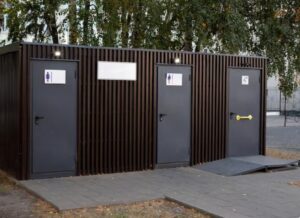
Benefits of Modular Toilets
Modular toilets offer numerous advantages, making them a preferred choice in the UAE’s dynamic, environmentally conscious environment.
Cost-Effectiveness
By leveraging prefabrication, modular toilets reduce labor and material costs compared to traditional construction, which requires extensive masonry, plumbing, and electrical work. Factory assembly eliminates on-site inefficiencies, such as delays from weather (e.g., sandstorms) or labor shortages, reducing project timelines by up to 60%. For temporary needs, rental options provide access to high-quality sanitation without long-term investment, ideal for events or short-term construction. Long-term savings come from durable materials (10-15 year lifespan) and water-efficient systems, minimizing maintenance and operational expenses.
Ease of Installation
Modular toilets are designed for rapid deployment. Portable units require a level surface (e.g., compacted soil or concrete) and connection to waste management systems (e.g., septic tanks or portable containers), with setup completed in 1-2 hours. Bathroom pods integrate into building structures, with pre-installed plumbing and electrical systems connected in 4-8 hours. In the UAE, where construction timelines are often accelerated for major events or infrastructure projects, this efficiency ensures minimal disruption and faster project completion.
Hygiene and Comfort
Modern modular toilets prioritize user comfort with high-capacity ventilation systems (50-100 CFM), antimicrobial coatings (reducing bacterial growth by 99.9%), and spacious interiors (1.2-2 meters wide). Touchless fixtures (infrared sensors with 0.1-second response), handwash stations (1-2 liter capacity with soap dispensers), and air fresheners enhance hygiene, addressing post-COVID concerns about shared spaces. Luxury units include climate control (22-25°C), LED lighting, and premium finishes, ensuring a comfortable experience in high-end settings like events or upscale facilities.
Sustainability
In a water-scarce region like the UAE, modular toilets incorporate water-saving technologies, such as low-flow flush valves (0.5-1 liter per flush) or dual-flush systems (3/6 liters), reducing water use by 50-70% compared to traditional toilets (6-8 liters per flush). Recyclable materials like HDPE and GRP, with recycling rates of 80-90%, minimize environmental impact. Waterless systems, such as compost or chemical toilets, eliminate water dependency in remote areas, supporting the UAE’s sustainability goals and green building initiatives.
Materials Used in Modular Toilets
The materials used in modular toilets are selected for durability, hygiene, and suitability for the UAE’s extreme climate, ensuring performance and longevity.
High Pressure Laminate (HPL)
HPL is a composite material made from layered resins and fibers, compressed under high pressure (1000-1500 psi) to create panels resistant to water, moisture, bacteria, and fire (Class B fire rating). Typically 12-13mm thick and 2000mm high, HPL panels are used in toilet cubicles for permanent installations in schools, offices, or malls. Their non-porous surface prevents bacterial growth (99.9% reduction), is easy to clean with standard disinfectants, and withstands high-traffic use (up to 500 daily users). HPL can be customized with colors, textures, or patterns, offering aesthetic flexibility for UAE’s design-conscious projects.
High-Density Polyethylene (HDPE)
HDPE is a lightweight thermoplastic with a density of 0.94-0.97 g/cm³, used in portable toilets for its resistance to corrosion, chemicals, and UV radiation (UV index 10-12 in the UAE). Weighing 50-100 kg, HDPE units are easy to transport and feature seamless designs to prevent leaks, with a tensile strength of 20-40 MPa. They withstand temperatures up to 60°C and sand exposure, making them ideal for construction sites or desert locations. HDPE’s flexibility allows for complex shapes, such as curved walls or twin-cabin configurations, enhancing functionality and user privacy.
Glass Reinforced Plastic (GRP)
GRP, a composite of fiberglass and resin, offers exceptional strength (70-100 MPa tensile strength) and corrosion resistance, ideal for portable and modular toilets in the UAE’s harsh environment. Weighing 10-20% less than steel, GRP units are moldable into intricate designs, such as integrated handwash stations or ventilation ducts, and withstand sandstorms and humidity. With a lifespan of 10-15 years, GRP is durable and low-maintenance, requiring only periodic cleaning to maintain hygiene.
Ceramic and Porcelain
Ceramic and porcelain are used in luxury modular toilets and bathroom pods, offering a premium aesthetic and durability. With a Mohs hardness of 7-8, these materials resist stains, scratches, and bacteria, ensuring longevity in high-end settings like hotels or residences. Their smooth, glazed surfaces are easy to clean, and they can be customized with colors or patterns to match project designs, aligning with the UAE’s focus on luxury infrastructure.
Smart Toilets in the Modular Market
Smart modular toilets integrate advanced technologies to enhance functionality, hygiene, and user comfort, aligning with the UAE’s futuristic vision. Key features include:
- Bidet Functions: Adjustable water pressure (0.5-1.5 bar) and temperature (30-40°C) for personalized cleaning, using 0.5-1 liter per cycle.
- Heated Seats: Maintaining 25-35°C for comfort in cooler UAE evenings.
- Motion-Activated Lids: Infrared sensors (0.1-second response) reduce contact, enhancing hygiene.
- UV Sterilization: Kills 99.9% of bacteria on surfaces, ideal for high-traffic areas.
- Sensors: Monitor water (0.5-1 liter per flush) and waste levels, optimizing efficiency by up to 30%.
lass=”yoast-text-mark” />>In the UAE, smart toilets are adopted in luxury hotels, high-end residences, and commercial spaces, requiring reliable power (220-240V) and regular maintenance (e.g., sensor calibration every 6 months). Challenges include higher maintenance complexity and power dependency, but their water-saving and hygiene features make them ideal for sustainable, high-traffic settings. Future advancements may include AI-driven diagnostics and IoT connectivity for real-time monitoring, further enhancing efficiency.
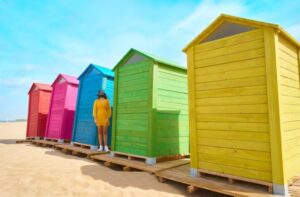
Eco-Friendly Modular Toilets
Sustainability is a critical focus in the UAE, and modular toilets incorporate eco-friendly features to support environmental goals.
Water-Saving Technologies
Low-flow flush valves (0.5-1 liter per flush) and dual-flush systems (3/6 liters) reduce water consumption by 50-70% compared to standard toilets. Waterless urinals use sealants or membranes to eliminate flushing, saving up to 150,000 liters annually per unit. Greywater recycling systems, which reuse sink water for flushing, reduce overall water use by 20-30%, critical in the UAE’s water-scarce environment.
Recyclable Materials
HDPE and GRP, with recycling rates of 80-90%, minimize environmental impact. Geopolymer-based materials, an alternative to concrete, reduce carbon emissions by 60% during production. These materials ensure modular toilets align with the UAE’s circular economy goals, supporting sustainable waste management.
Compost Toilets
Compost toilets use aerobic decomposition to break down waste into compost over 6-12 months, requiring no water or plumbing. Suitable for remote desert locations, they produce compost for landscaping, though cultural acceptance in the UAE is limited due to preferences for flush-based systems. Chemical toilets, using biodegradable additives, offer a waterless alternative, neutralizing odors and pathogens for safe disposal.
Alignment with UAE Goals
The UAE’s Vision 2030 emphasizes sustainable development, and modular toilets contribute through water conservation, recyclable materials, and energy-efficient features like solar-powered ventilation (10-20W panels). These align with Estidama and Dubai’s Green Building Regulations, ensuring sanitation supports national environmental objectives.
Installation and Maintenance of Modular Toilets
Installation Process
Portable modular toilets require a stable surface (e.g., concrete or compacted soil with 100 kPa bearing capacity) and connection to waste management systems, such as septic tanks or portable containers (700-1000 liters). Setup takes 1-2 hours, with units secured using ground anchors (rated for 50 km/h winds) to ensure stability in UAE’s windy conditions. Bathroom pods integrate into building structures, with pre-installed plumbing (50mm pipes) and electrical systems (220-240V) connected in 4-8 hours. Installations must account for sand accumulation and heat, using heat-resistant seals (rated for 60°C) and dust-proof fittings (IP65).
Maintenance Requirements
Maintenance involves daily cleaning for high-traffic units (500+ users), waste tank emptying (every 100-200 uses), and ventilation system checks (filters replaced every 3-6 months). Antimicrobial coatings reduce bacterial growth by 99.9%, minimizing cleaning frequency. Touchless fixtures (0.1-second sensors) and air fresheners enhance hygiene. Smart toilets require sensor calibration and software updates every 6-12 months, ensuring optimal performance.
UAE-Specific Considerations
The UAE’s climate demands UV-resistant materials (UV index 10-12) and dust-proof seals to prevent degradation. Water scarcity necessitates efficient waste management, such as vacuum systems (0.2-0.5 liters per flush) or chemical treatments (biodegradable additives). Remote locations require mobile maintenance teams or self-contained units with large waste tanks, ensuring consistent operation in areas with limited infrastructure.
Regulatory Framework for Modular Toilets in the UAE
The UAE enforces stringent sanitation regulations to ensure health, safety, and environmental compliance. Health and safety codes mandate adequate ventilation (50-100 CFM), antimicrobial surfaces (99.9% bacterial reduction), and regular waste disposal (every 100-200 uses) to prevent health risks. Water efficiency regulations, enforced by municipalities like Dubai and Abu Dhabi, require low-flow fixtures (0.5-3 liters per flush) to meet the UAE’s goal of reducing water consumption by 20% by 2030. For permanent installations, building permits ensure compliance with structural codes (e.g., UAE Fire and Life Safety Code), particularly for bathroom pods in high-rise projects. Accessibility standards, based on the UAE’s Universal Design Code, require features like wheelchair ramps (1:12 slope), wider doors (900mm), and grab bars for inclusivity. Non-compliance can result in fines or project delays, making adherence critical for successful implementation.
Cost Analysis of Modular Toilets
Modular toilets offer economic benefits through reduced construction time and labor compared to traditional toilets, which require weeks of masonry, plumbing, and electrical work. Rental options suit temporary needs, such as events or 3-6 month construction projects, providing flexibility without long-term investment. Purchasing is ideal for permanent installations, allowing customization and ownership. Factors influencing costs include material quality (e.g., HDPE vs. ceramic), technological features (e.g., smart sensors or bidet functions), and customization (e.g., branding or accessibility). Long-term savings stem from water-efficient systems (50-70% water reduction) and durable materials (10-15 year lifespan), minimizing maintenance and replacement needs. Budgeting involves assessing project duration (e.g., 1 month vs. 5 years), user volume (50-500 daily users), and environmental conditions (e.g., desert vs. urban) to optimize expenses.
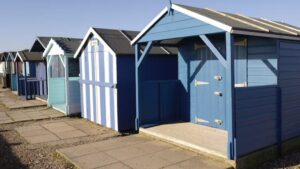
Customization Options for Modular Toilets
Customization enhances modular toilets’ functionality and appeal in the UAE. For events, units can be branded with logos, colors, or themes using vinyl wraps or painted panels (UV-resistant coatings for durability). Luxury features include climate control (22-25°C, 500W cooling units), LED lighting (500-1000 lumens), and high-grade finishes like ceramic or stainless steel, ideal for upscale settings. Accessibility options, such as wheelchair ramps (1:12 slope), wider doors (900mm), and grab bars (32mm diameter), ensure compliance with UAE’s Universal Design Code. Cultural considerations, like separate male/female units or wudu facilities with low-flow faucets (1-2 liters per minute) for ablution, cater to local preferences, enhancing user acceptance and comfort.
Modular Toilets for Specific Industries
Oil and Gas
Remote oil and gas sites require self-contained toilets with large waste tanks (700-1000 liters) and waterless systems (chemical or compost) to operate off-grid. Units are built with GRP or HDPE (70-100 MPa tensile strength) to withstand sandstorms and temperatures up to 60°C. Solar-powered ventilation (10-20W panels) and lighting ensure energy efficiency, while lightweight designs (50-80 kg) facilitate transport to remote desert locations.
Hospitality
Hotels and resorts use bathroom pods for consistent quality and fast installation, reducing construction time by 50-60%. Pods feature premium fixtures, such as bidet toilets (0.5-1.5 bar pressure) or heated seats (25-35°C), and finishes like marble or glass, aligning with the UAE’s luxury hospitality standards. Integrated plumbing and electrical systems streamline installation in high-rise buildings.
Education
Schools and universities opt for HPL cubicles (12-13mm thick) for durability and hygiene, resisting vandalism and moisture (99.9% bacterial reduction). Modular designs allow for quick expansion to accommodate growing student populations, with accessibility features like ramps and grab bars ensuring inclusivity.
Film and Media
The UAE’s film industry uses portable toilets for on-location shoots, with customizable designs (e.g., neutral colors to blend with sets) and luxury features (e.g., air conditioning, LED lighting) for cast and crew comfort. Units weigh 50-80 kg for easy transport and include large waste tanks (700 liters) for extended use.
Challenges in the UAE Modular Toilet Market
Climate Durability
The UAE’s extreme heat (50°C) and sandstorms challenge material durability. UV-resistant coatings (UV index 10-12) and dust-proof seals (IP65 rating) prevent degradation, ensuring a 10-15 year lifespan. Materials like GRP and HDPE are tested to withstand 1000 hours of UV exposure and 50 km/h winds, critical for outdoor units.
Maintenance Logistics
Remote locations complicate waste disposal and cleaning. Mobile maintenance teams, equipped with vacuum pumps (0.2-0.5 liters per flush) or chemical treatments (biodegradable additives), ensure hygiene. Self-contained units with large waste tanks (1000 liters) operate for weeks without servicing, addressing logistical challenges.
Cost Barriers
Advanced features like smart technology or luxury finishes increase upfront costs. Scalable designs (e.g., basic vs. premium units) and rental options mitigate this, allowing users to balance functionality with budget constraints. Durable materials reduce long-term maintenance costs by 20-30%.
Cultural Preferences
Privacy, gender separation, and wudu facilities are critical in the UAE. Twin-cabin designs, with separate male/female entrances, and ablution stations (1-2 liter faucets) ensure cultural compliance. Community education campaigns promote acceptance of modern sanitation, addressing resistance to portable units in traditional settings.
Case Studies: Modular Toilets in Action
- Construction Site: A Dubai infrastructure project deployed 50 portable toilets for 5,000 workers, using HDPE units with 1000-liter waste tanks, low-flow flush valves (0.5 liters), and ventilation systems (100 CFM). Heat-resistant coatings (rated for 60°C) and dust-proof seals ensured durability, with weekly maintenance maintaining hygiene.
- Event: A cultural festival used 20 luxury modular toilets with air conditioning (22°C), LED lighting (1000 lumens), and branded vinyl wraps, accommodating 10,000 attendees. Gender-separated units and wheelchair ramps (1:12 slope) ensured inclusivity, with waste tanks emptied daily.
- Commercial Project: A high-rise hotel installed 200 bathroom pods with ceramic fixtures, integrated plumbing (50mm pipes), and eco-friendly flush valves (1 liter). Installation reduced construction time by 60%, ensuring uniform quality across rooms.
- Luxury Installation: A residential project integrated 10 smart toilets with bidet functions (0.5-1.5 bar), heated seats (25-35°C), and UV sterilization (99.9% bacterial reduction), enhancing comfort and hygiene in a premium villa.
Technological Innovations in Modular Toilets
Technological advancements enhance modular toilets’ functionality and efficiency:
- Smart Sensors: Monitor water (0.5-1 liter per flush) and waste levels, optimizing efficiency by 30%. Sensors detect usage patterns, adjusting flush volumes to minimize waste.
- UV Sterilization: Uses 254nm UV-C light to eliminate 99.9% of bacteria, ideal for high-traffic areas like events or construction sites.
- Waterless Systems: Compost toilets use aerobic decomposition (6-12 months), producing compost for landscaping. Chemical toilets use biodegradable additives (e.g., glutaraldehyde-based) to neutralize pathogens, requiring no water.
- IoT Integration: Enables remote monitoring of maintenance needs (e.g., tank levels, filter status), reducing downtime by 30%. In the UAE, IoT aligns with smart city initiatives, though adoption requires reliable power (220-240V) and infrastructure.
- Solar Power: Ventilation (10-20W panels) and lighting systems reduce energy use by 50%, suitable for off-grid desert locations.
These innovations enhance hygiene, sustainability, and user comfort, positioning modular toilets as a cornerstone of the UAE’s smart infrastructure.

Modular Toilets and UAE’s Sustainability Goals
The UAE’s Vision 2030 prioritizes sustainable development, and modular toilets contribute through:
- Water Conservation: Low-flow systems (0.5-3 liters per flush) and greywater recycling (20-30% water reuse) reduce consumption by 50-70%, supporting the UAE’s goal to cut water use by 20% by 2030.
- Recyclable Materials: HDPE and GRP (80-90% recyclable) and geopolymer-based structures (60% lower carbon emissions) align with circular economy goals.
- Energy Efficiency: Solar-powered ventilation (10-20W) and LED lighting (500-1000 lumens) minimize energy use by 50%.
- Waste Management: Compost toilets produce usable compost, while chemical systems ensure safe disposal, reducing environmental impact.
>These features align with Estidama and Dubai’s Green Building Regulations, ensuring modular toilets support the UAE’s environmental objectives through resource-efficient design and operation.
<strong>Comparing Rental vs. Purchase Options
Renting modular toilets suits short-term needs, such as events (1-7 days) or construction projects (3-6 months), offering flexibility and minimal upfront investment. Units are delivered, maintained, and removed by providers, with waste tanks (700-1000 liters) emptied every 100-200 uses. Purchasing is ideal for permanent installations, such as commercial buildings or long-term industrial sites, allowing customization (e.g., branding, accessibility) and ownership. Durable materials (10-15 year lifespan) and water-efficient systems (0.5-3 liters per flush) ensure long-term savings. A decision framework considers:
- Project Duration: Rentals for <1 year, purchases for >1 year.
- User Volume: 50-500 daily users for rentals, 500+ for purchases.
- Maintenance Capacity: Rentals include provider maintenance, while purchases require in-house or contracted services.
This framework ensures alignment with operational needs, balancing flexibility and long-term investment.
Future of Modular Toilets in the UAE
The future of modular toilets in the UAE is shaped by technological, environmental, and cultural trends:
- Technological Advancements: AI-driven diagnostics predict maintenance needs (e.g., tank emptying, filter replacement), reducing downtime by 30%. IoT connectivity enables real-time monitoring of water and waste levels, optimizing efficiency.
- Sustainability: Waterless systems (compost or chemical toilets) and solar-powered units (20-50W panels) will dominate remote applications, reducing water and energy use by 70-100%. Geopolymer materials will replace concrete, cutting emissions by 60%.
- Cultural Integration: Enhanced wudu facilities (1-2 liter faucets) and privacy-focused designs (e.g., twin-cabin units) will ensure cultural compliance, increasing acceptance in traditional communities.
- Smart City Alignment: Integration with UAE’s smart city initiatives, such as Dubai’s Smart City project, will see modular toilets with automated cleaning, sensor-based resource tracking, and 5G connectivity for maintenance alerts.
>These trends position modular toilets as a key component of the UAE’s sustainable, innovative infrastructure, meeting the needs of urban and remote settings.
How to Choose the Right Modular Toilet Supplier
Selecting a supplier involves evaluating critical factors to ensure reliability and suitability:
- Durability: Materials like GRP or HDPE (70-100 MPa tensile strength) rated for UAE’s climate (50°C, UV index 10-12).
- Customization: Options for branding (vinyl wraps), accessibility (ramps, grab bars), or cultural features (wudu stations).
- Support Services: Delivery (within 24-48 hours), installation (1-8 hours), and maintenance (weekly tank emptying, filter checks).
Key questions to ask include: - What is the supplier’s availability for rapid deployment?
- Do units comply with UAE regulations (e.g., water efficiency, accessibility)?
- What maintenance schedules are offered (e.g., daily, weekly)?
- Are spare parts (e.g., flush valves, sensors) readily available?
A checklist should assess material quality, scalability (e.g., 10-100 units), and sustainability features (e.g., low-flow systems). Avoid suppliers with poor communication, limited customization, or inadequate after-sales support, as these can lead to project delays or hygiene issues.
Modular Toilets for Disaster Relief and Humanitarian Efforts
Modular toilets are critical for disaster relief and humanitarian efforts in the UAE, providing rapid sanitation in crises like floods or refugee support. Portable units, weighing 50-80 kg, are deployed in hours, featuring large waste tanks (700-1000 liters) and waterless systems (chemical or compost) for off-grid use. Durable materials (GRP or HDPE) withstand extreme conditions (50°C, sandstorms), while solar-powered ventilation (10-20W) and lighting ensure functionality. Antimicrobial coatings (99.9% bacterial reduction) and touchless fixtures maintain hygiene in high-traffic relief camps. The UAE’s humanitarian initiatives, such as refugee support in the region, rely on these units, with lightweight designs facilitating transport by truck or helicopter. Units can serve 100-200 users per tank, with maintenance schedules (weekly emptying) ensuring long-term reliability in challenging environments.
Cultural and Social Considerations for Modular Toilets in the UAE
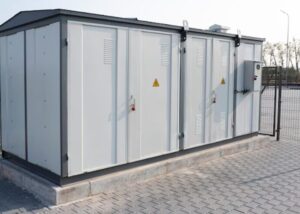
Cultural sensitivity is paramount in the UAE, shaping modular toilet design and deployment:
- Privacy: Twin-cabin designs with separate male/female entrances ensure compliance with social norms, critical for public events or community settings. Units feature soundproof walls (30-40 dB reduction) and lockable doors for user comfort.
- Wudu Facilities: Integrated ablution stations with foot-washing areas and low-flow faucets (1-2 liters per minute) cater to religious practices, ensuring accessibility for daily prayers. Units are designed with non-slip surfaces and adequate drainage to maintain hygiene.
- Social Acceptance: Spacious interiors (1.5-2 meters wide) and premium finishes (e.g., ceramic or stainless steel) align with expectations for cleanliness and comfort. Community education campaigns, such as workshops or demonstrations, promote acceptance of portable units, addressing resistance in traditional settings by highlighting hygiene (99.9% bacterial reduction) and sustainability benefits (50-70% water savings).
These considerations ensure modular toilets meet the UAE’s cultural and social expectations, enhancing user satisfaction and adoption.
Conclusion
Modular toilets are transforming sanitation in the UAE, offering versatile, sustainable, and innovative solutions for construction sites, events, commercial projects, remote locations, and humanitarian efforts. Their adaptability to the UAE’s extreme climate, cultural preferences, and environmental goals—through water-saving systems, durable materials, and smart technologies—makes them indispensable for modern infrastructure. Readers are encouraged to assess project requirements, explore customization options (e.g., accessibility, wudu facilities), and consult experts to select the best modular toilet solutions. By prioritizing durability, hygiene, and sustainability, these systems ensure efficiency, comfort, and compliance with UAE standards, supporting the nation’s vision for a sustainable, innovative future
Frequently Asked Questions
1. What are modular toilets in Dubai?
Modular toilets are prefabricated, portable sanitation units made from durable materials like GRP, FRP, or HDPE. Designed for quick assembly and disassembly, they provide eco-friendly, customizable restroom solutions ideal for events, construction sites, and temporary setups across the UAE.
2. What are the benefits of modular toilets for construction sites in Dubai?
They offer quick installation without plumbing, high durability against harsh UAE weather, low maintenance, and cost savings. These units ensure hygiene and compliance with local regulations, supporting high-traffic environments like building projects in Dubai and Abu Dhabi.
3. How much does it cost to rent modular toilets in Dubai?
Rental prices vary by type, duration, and quantity, starting from AED 500–1,500 per unit monthly for basic models. Luxury or container options may cost more. Contact suppliers like Ecoplanet or Kazema for customized quotes tailored to your needs in the UAE.
4. Where can I buy modular toilets in Dubai?
Top suppliers include Kazema Portable Toilets in Ajman (serving Dubai), Ecoplanet in Dubai and Abu Dhabi, and MFC Concepts for container conversions. They offer sales, rentals, and nationwide delivery across the UAE for immediate availability.
5. What types of modular toilets are available in the UAE?
Options include plastic/HDPE flush units, GRP/fiber luxury models, chemical/waterless eco-friendly versions, trailer/caravan mobiles, handicapped-accessible designs, and container-based ablution blocks. Choose based on your event or site requirements.
6. How long does it take to install a modular toilet in Dubai?
Installation is rapid—often within 1–2 hours for a single unit—thanks to their pre-assembled, lightweight design. No on-site plumbing or foundations are needed, making them perfect for urgent setups at Dubai events or construction zones.
7. Are modular toilets eco-friendly in Dubai?
Yes, many feature waterless chemical systems, biodegradable waste options, and recyclable materials like GRP. Suppliers like Ecoplanet emphasize sustainable designs that reduce water usage and environmental impact, aligning with UAE’s green initiatives.
8. Can modular toilets be customized for events in Dubai?
Absolutely—customize with luxury finishes, air conditioning, mirrors, handwashing stations, or branded exteriors. Ideal for weddings, festivals, or corporate events, providers offer tailored solutions for comfort and aesthetics in high-end Dubai gatherings.
9. What maintenance is required for modular toilets in the UAE?
Routine cleaning, waste tank emptying (every 1–3 days based on usage), and deodorizer refills keep them hygienic. Professional servicing from rental companies ensures compliance and freshness, minimizing downtime on Dubai sites.
10. Do modular toilets comply with Dubai regulations?
Yes, reputable UAE suppliers ensure units meet Dubai Municipality and Civil Defence standards for sanitation, fire safety, and waste management. Always verify certifications when renting or buying for legal peace of mind.
